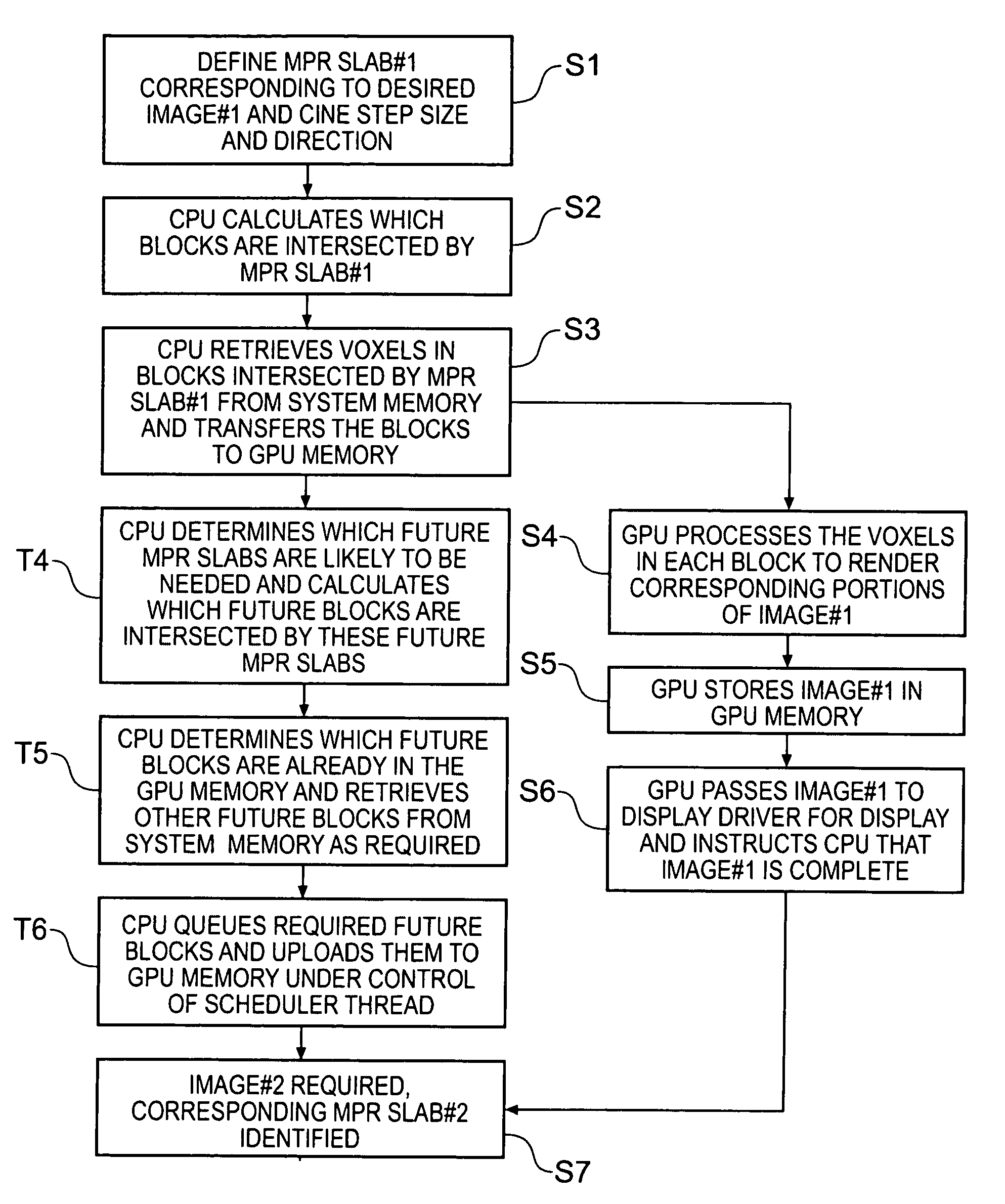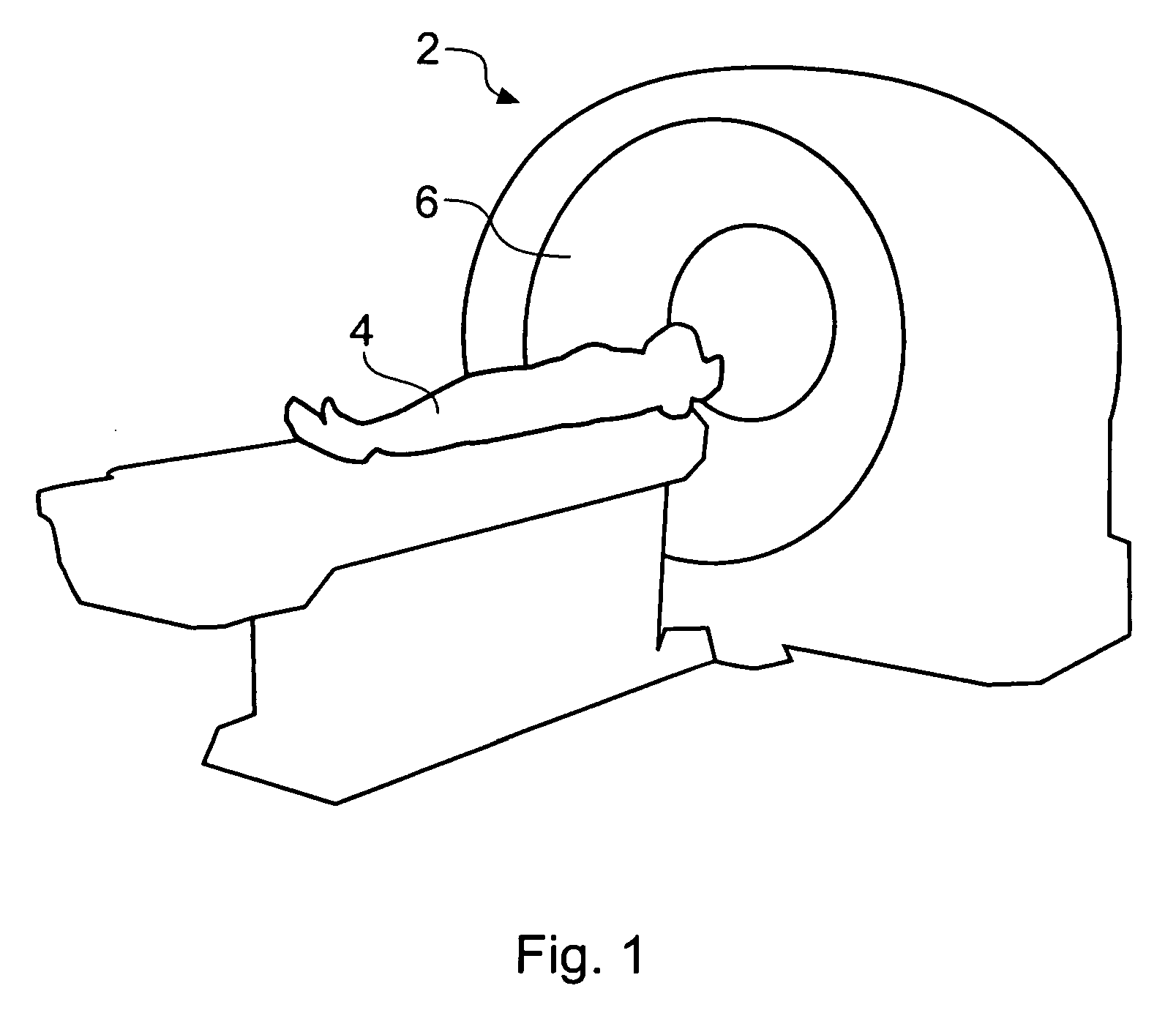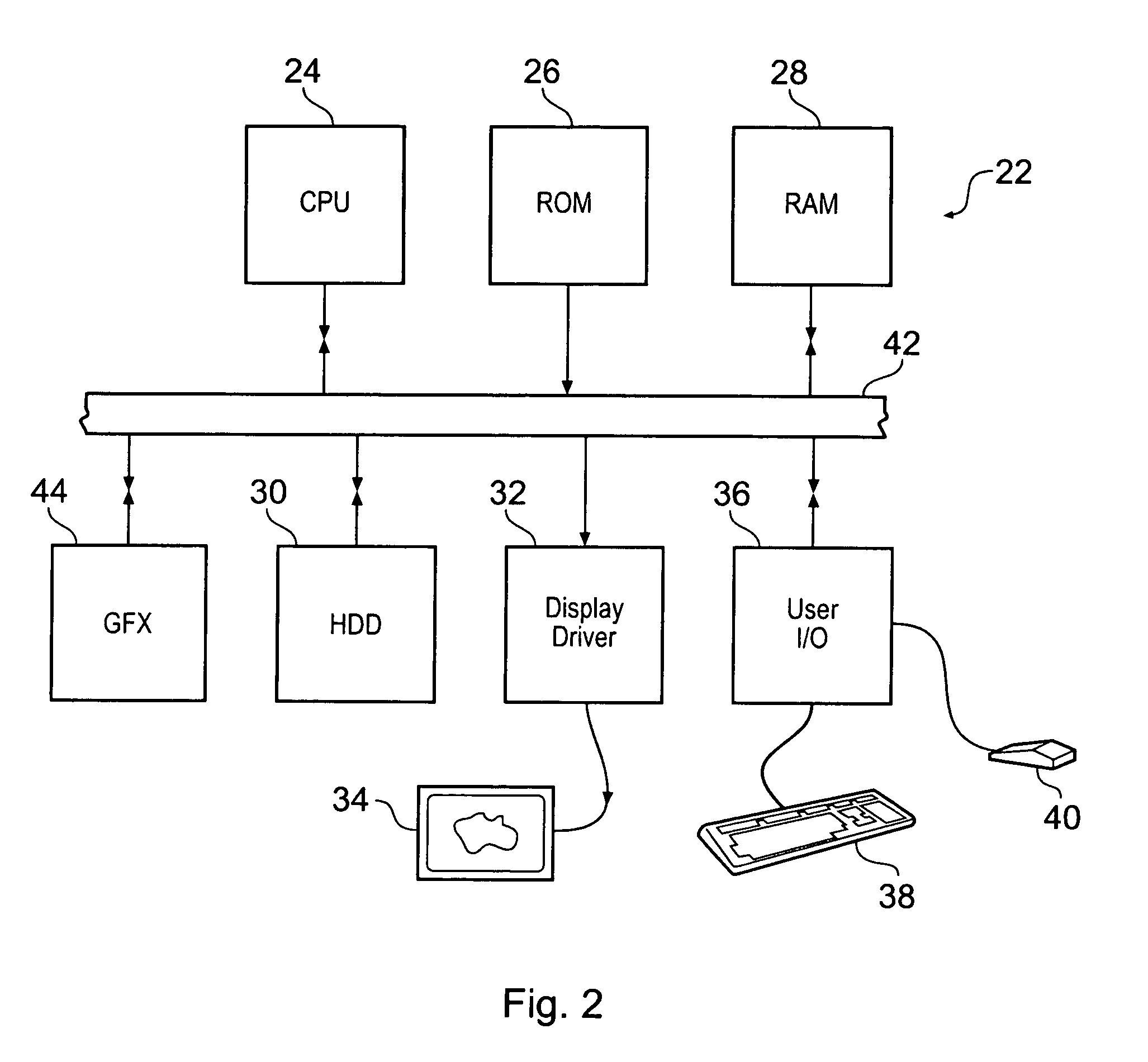Volume rendering apparatus and method
a volume rendering and volume technology, applied in the field of volume rendering, can solve the problems of high computational intensity of medical volume rendering, difficulty in implementing a practical gpu-based medical image renderer, and insufficient processing power of modern general purpose computers, so as to achieve low additional cost and increase the speed of rendering
- Summary
- Abstract
- Description
- Claims
- Application Information
AI Technical Summary
Benefits of technology
Problems solved by technology
Method used
Image
Examples
Embodiment Construction
[0058]FIG. 1 is a schematic perspective view of a generic MR scanner 2 for obtaining a 3D scan of a region of a patient 4. An anatomical feature of interest (in this case a head) is placed within a circular opening 6 of the NMR scanner 2 and a series of image slices through the patient is taken. Raw image data are derived from the MR scanner and could comprise a collection of one thousand 2D 512×512 data subsets, for example. These data subsets, each representing a slice of the region of the patient being studied, are combined to produce volume data. The volume data comprise a collection of voxels each of which corresponds to a pixel in one of the slices. Thus the volume data are a 3D representation of the feature imaged and various user-selected 2D projections (output images) of the 3D representation can be displayed (typically on a computer monitor).
[0059] Different imaging modalities (e.g. CT, MR, PET, ultrasound) typically provide 15 different image resolutions (i.e. voxel size...
PUM
 Login to View More
Login to View More Abstract
Description
Claims
Application Information
 Login to View More
Login to View More - R&D
- Intellectual Property
- Life Sciences
- Materials
- Tech Scout
- Unparalleled Data Quality
- Higher Quality Content
- 60% Fewer Hallucinations
Browse by: Latest US Patents, China's latest patents, Technical Efficacy Thesaurus, Application Domain, Technology Topic, Popular Technical Reports.
© 2025 PatSnap. All rights reserved.Legal|Privacy policy|Modern Slavery Act Transparency Statement|Sitemap|About US| Contact US: help@patsnap.com



